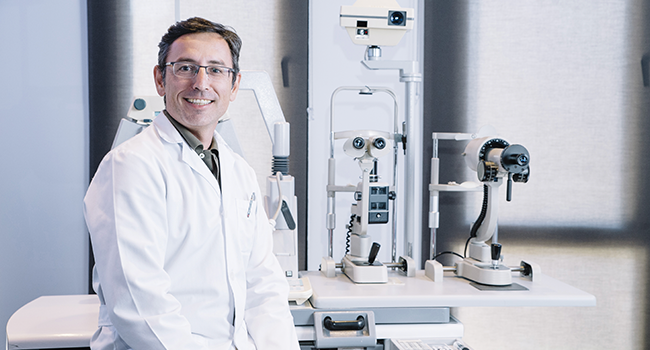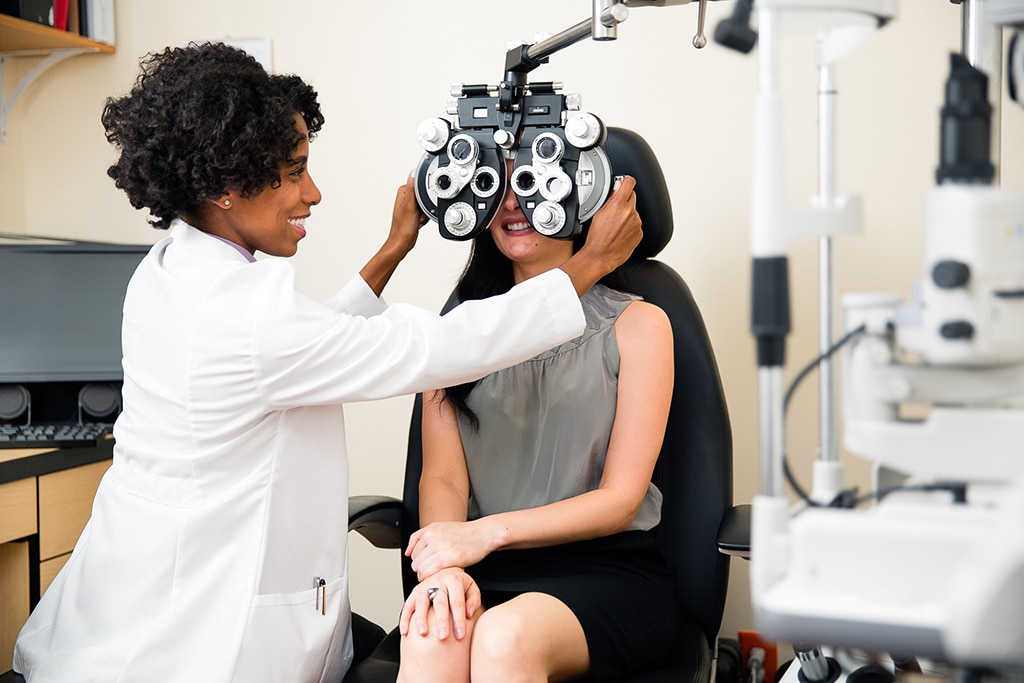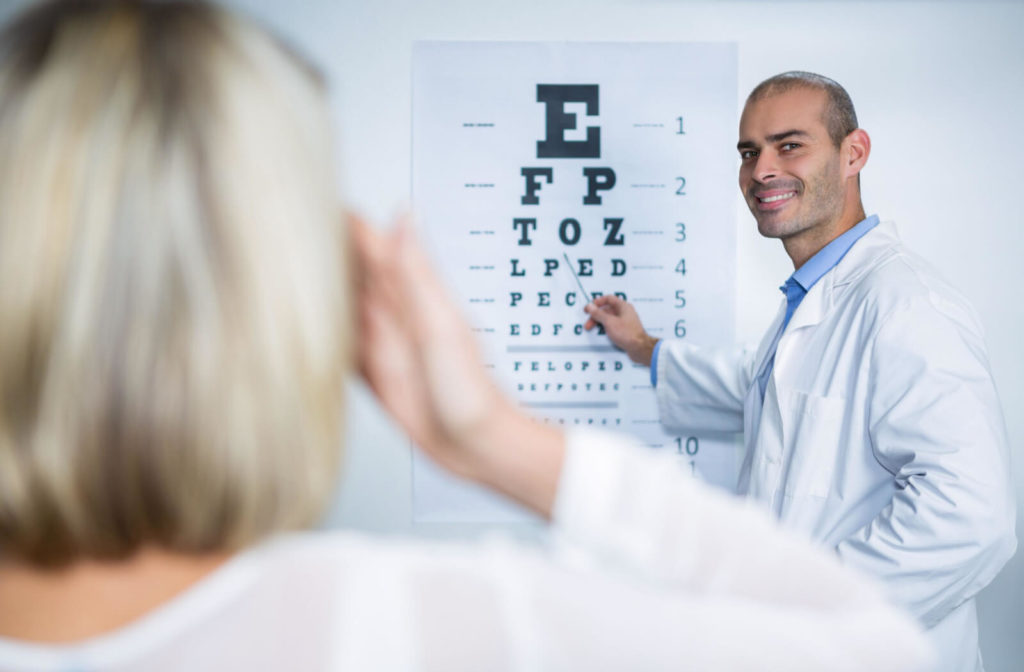Experience Personalized Care with Opticore Optometry in Chino
Experience Personalized Care with Opticore Optometry in Chino
Blog Article
Checking Out the Latest Technological Developments in Optometry and What They Mean for Optometrists
From the precision of Optical Comprehensibility Tomography to the nuanced understandings provided by AI-driven analysis tools, these technologies are setting new criteria in patient assessment and treatment. As these advancements permeate the method, eye doctors are encountered with the challenge of welcoming these tools to improve client results.
Developments in Diagnostic Devices
Advancing the area of optometry, technologies in analysis devices have revolutionized the way eye care professionals analyze and diagnose eye problems and aesthetic impairments. The past decade has seen considerable technical innovations, enabling more precise and detailed analyses. Optical Comprehensibility Tomography (OCT), for instance, gives high-resolution cross-sectional photos of the retina, enabling the very early detection of diseases such as glaucoma and age-related macular degeneration. This non-invasive imaging method has ended up being indispensable in contemporary optometric technique.
One more trick development is the intro of advanced corneal topography systems, which map the surface area curvature of the cornea with precision. These tools are specifically beneficial for suitable contact lenses and identifying corneal problems. Electronic retinal imaging has actually transformed standard ophthalmoscopy, supplying detailed, scenic sights of the retina that facilitate extensive aesthetic evaluations.
The advancement of wavefront aberrometry has actually additionally been essential, allowing the analysis of refractive errors with unequaled precision (Opticore Optometry). This modern technology assists in customizing corrective lenses and enhancing surgical outcomes for refractive surgeries. Jointly, these diagnostic developments equip eye doctors to supply superior person treatment, ensuring early treatment and tailored treatment strategies, ultimately improving aesthetic health outcomes
AI in Person Monitoring
Building on the foundation of advanced analysis devices, the unification of artificial knowledge (AI) in person monitoring represents a transformative leap for optometry. AI systems are increasingly used to improve efficiency, precision, and personalization in person care. By assessing vast quantities of information, AI can recognize patterns and predict potential ocular problems, making it possible for optometrists to tailor interventions more effectively. This capacity is crucial in managing persistent eye diseases such as glaucoma and diabetic person retinopathy, where very early discovery and continuous surveillance are essential.
Moreover, AI-driven platforms promote structured patient communications and administrative processes. Automated organizing, virtual consultations, and customized follow-up strategies not only enhance patient satisfaction yet likewise maximize time monitoring for professionals. These systems can triage individuals based on the seriousness of their problems, making certain that those in important need receive timely focus.
In addition, AI improves decision-making by providing eye doctors with evidence-based suggestions and therapy paths. By integrating information from electronic health and wellness documents, AI devices offer insights that inform professional choices, reducing the threat of mistakes and improving individual end results. As AI remains to evolve, its duty in patient monitoring will likely expand, reshaping the landscape of optometric treatment.
Developments in Retinal Imaging
In the world of optometry, retinal imaging has actually observed impressive technical innovations that are enhancing analysis capabilities and patient care. Innovations such as Optical Coherence Tomography (OCT) and fundus digital photography have actually transformed how optometrists envision and assess the retina. OCT, in particular, gives high-resolution, cross-sectional pictures of the retina, try this site enabling the thorough evaluation of its layers. This ability is invaluable for early detection and administration of conditions like glaucoma, diabetic retinopathy, and age-related macular deterioration.
Improved imaging modalities like OCT angiography are further refining diagnostic accuracy. This non-invasive method maps blood flow in the retina, offering essential insights right into vascular health and wellness without the demand for dye injections. In addition, adaptive optics technology is being integrated into retinal imaging systems to fix eye aberrations, providing extraordinary photo clearness. Such developments help with the identification of minute retinal adjustments that might symbolize disease development.
Moreover, advancements in fabricated knowledge are increasing retinal imaging by enabling computerized analysis of large datasets. These systems aid optometrists in recognizing patterns a sign of pathology, thereby enhancing diagnostic accuracy and effectiveness. Collectively, these innovations are transforming retinal imaging right into a cornerstone of modern eye care, boosting end results and broadening therapeutic possibilities.
Teleoptometry's Expanding Function
Teleoptometry is increasingly becoming a vital element of eye care, driven by developments in digital interaction and diagnostic tools. This is particularly useful in rural and underserved locations where accessibility to specialized eye treatment is typically restricted.
The combination of expert system (AI) additional enhances teleoptometry, making it possible for the evaluation of aesthetic data and helping in the detection of eye problems such as glaucoma and diabetic retinopathy. AI-powered algorithms can swiftly translate complex imaging data, offering optometrists with beneficial insights that strengthen clinical decision-making.
Furthermore, teleoptometry supports connection of care via seamless combination with electronic health and wellness records (EHRs), enabling eye doctors to preserve thorough patient backgrounds. This ensures that clients obtain personalized and constant treatment even when seeking advice from various professionals.
In spite of these benefits, obstacles remain, consisting of making certain data safety and taking care of individual expectations. Nevertheless, teleoptometry represents a significant stride towards even more obtainable, efficient, and patient-centered eye care. As innovation progresses, its function is poised to expand even more.

Future Trends in Eye Care
A myriad of innovative trends is readied to improve the future of eye treatment, driven by technical blog here innovations and the evolving needs of clients. One considerable pattern is the assimilation of synthetic intelligence (AI) in diagnostics, which assures to boost the precision and performance of eye exams. AI formulas can examine huge amounts of information from retinal pictures, possibly detecting problems like diabetic person retinopathy and glaucoma earlier than standard techniques.
Furthermore, personalized medicine is obtaining grip in optometry, with genetic screening educating customized therapy strategies. This technique aims to enhance client end results by customizing treatments to individual hereditary profiles. Wearable technology, such as clever get in touch with lenses, is also imminent, supplying real-time tracking of intraocular stress or sugar levels, thus giving constant understandings into systemic and eye health.
The fostering of augmented fact (AR) and digital truth (VIRTUAL REALITY) in training and individual education and learning is an additional arising pattern. These technologies offer immersive experiences that can boost understanding and skills both for eye doctors and patients. As these patterns advance, eye doctors have to stay abreast of technical developments to give advanced treatment, ensuring improved individual results and fulfillment in the dynamic landscape of eye care.
Final Thought

Collectively, these analysis advancements encourage eye doctors to provide exceptional patient care, guaranteeing early treatment and tailored therapy techniques, click here for more info ultimately improving aesthetic wellness outcomes.

As these innovations proceed to progress, eye doctors must adapt and incorporate them right into technique, ultimately enhancing operations performance and raising the standard of eye care provided to people.
Report this page